
The Palazzo Ducale di Pesaro or Ducal Palace of Pesaro is a Renaissance-style palace in the city center of Pesaro, region of the Marche, Italy.

The Palazzo Ducale di Pesaro or Ducal Palace of Pesaro is a Renaissance-style palace in the city center of Pesaro, region of the Marche, Italy.
The initial structure at the site upon which this palace was built was likely commissioned by the Malatesta, sometime between 1285 and 1429. The present palace was commissioned in the 15th century by Alessandro Sforza, and held by the Della Rovere family till 1631. Duke Francesco Maria I Della Rovere in 1523-1532, commissioned restorations from Girolamo Genga. Francesco Maria's son, Guidubaldo II continued renovation. Girolamo's son, Bartolomeo, added a wing, designed by Filippo Terzi along via Barignani. The interiors once had paintings by Federico Brandani, Taddeo Zuccari, and Ludovico Carracci.
With the passage in 1631 of the Duchy from the Della Rovere family to the Papal States, the palace housed the Papal legates. In the 19th century, refurbishment commissioned the decoration of five halls to Romolo Liverani. With the entry of the Papal States to the Kingdom of Italy, the palace next hosted the Prefecture. From 1920 to 1936, it housed the Civic Museum till this moved to the Palazzo Toschi Mosca. [1]
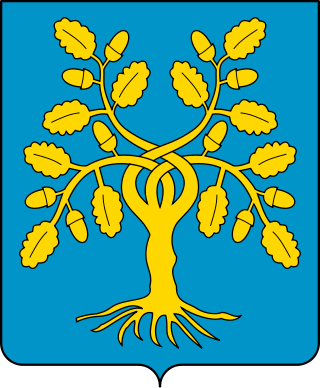
The House of Della Rovere was a powerful Italian noble family. It had humble origins in Savona, in Liguria, and acquired power and influence through nepotism and ambitious marriages arranged by two Della Rovere popes: Francesco Della Rovere, who ruled as Sixtus IV from 1471 to 1484 and his nephew Giuliano, who became Julius II in 1503. Sixtus IV built the Sistine Chapel, which was named after him. Julius II was patron to Michelangelo, Raphael and many other Renaissance artists and started the modern rebuilt of St. Peter's Basilica. Also the Basilica of San Pietro in Vincoli in Rome was the family church of the Della Rovere. Members of the family were influential in the Church of Rome, and as dukes of Urbino, dukes of Sora and lords of Senigallia; the title of Urbino was extinguished with the death of Francesco Maria II in 1631, and the family died out with the death of his granddaughter Vittoria, Grand Duchess of Tuscany.

Pope Sixtus IV was head of the Catholic Church and ruler of the Papal States from 9 August 1471 to his death, in August 1484. His accomplishments as pope included the construction of the Sistine Chapel and the creation of the Vatican Library. A patron of the arts, he brought together the group of artists who ushered the early Renaissance into Rome with the first masterpieces of the city's new artistic age.
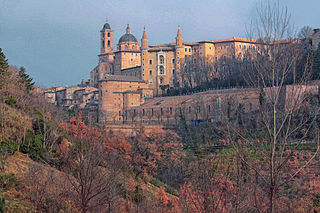
Urbino is a comune (municipality) in the Italian region of Marche, southwest of Pesaro, a World Heritage Site notable for a remarkable historical legacy of independent Renaissance culture, especially under the patronage of Federico da Montefeltro, duke of Urbino from 1444 to 1482.

The House of Riario, sometimes referred to as Riario-Sforza, is an Italian noble family from Savona, near Genoa. Closely associated with the Papal States, the family gained control over several signorie ("lordships"), such as Bologna and Forlì.

Girolamo Rainaldi was an Italian architect who worked mainly in a conservative Mannerist style, often with collaborating architects. He was a successful competitor of Bernini. His son, Carlo Rainaldi, became an even more notable, more fully Baroque architect.

Pesaro is a comune (municipality) in the Italian region of Marche, capital of the province of Pesaro and Urbino, on the Adriatic Sea. According to the 2011 census, its population was 95,011, making it the second most populous city in the Marche, after Ancona. Pesaro was dubbed the "Cycling City" by the Italian environmentalist association Legambiente in recognition of its extensive network of bicycle paths and promotion of cycling. It is also known as "City of Music", for it is the birthplace of the composer Gioachino Rossini. In 2015 the Italian Government applied for Pesaro to be declared a "Creative City" in UNESCO's World Heritage Sites. In 2017 Pesaro received the European City of Sport award together with Aosta, Cagliari and Vicenza.

Girolamo Genga was an Italian painter and architect of the late Renaissance, Mannerist style.

Fossombrone is a town and comune in the province of Pesaro and Urbino, in the Marche region of central Italy.

Raffaele Sansoni Galeoti Riario was an Italian Cardinal of the Renaissance, mainly known as the constructor of the Palazzo della Cancelleria and the person who invited Michelangelo to Rome. He was a patron of the arts. He was also the first adolescent to be elevated in the College of Cardinals in the history of the Holy See.

Ascanio Maria Sforza Visconti was an Italian cardinal of the Catholic Church. Generally known as a skilled diplomat who played a major role in the election of Rodrigo Borgia as Pope Alexander VI, Sforza served as Vice-Chancellor of the Holy Roman Church from 1492 until 1505.

Francesco Maria I della Rovere was an Italian condottiero, who was Duke of Urbino from 1508 to 1516 and, after retaking the throne from Lorenzo II de' Medici, from 1521 to 1538.

Urbania is a comune (municipality) in the Province of Pesaro e Urbino in the Italian region of Marche, located about 80 kilometres (50 mi) west of Ancona and about 40 kilometres (25 mi) southwest of Pesaro, next to the river Metauro.

Vittoria della Rovere was Grand Duchess of Tuscany as the wife of Grand Duke Ferdinando II. She had four children with her husband, two of whom would survive infancy: the future Cosimo III, Tuscany's longest-reigning monarch, and Francesco Maria, a prince of the Church. At the death of her grandfather Francesco Maria della Rovere, she inherited the Duchies of Rovere and Montefeltro, which reverted to her second son, Francesco Maria, at her death. She was later entrusted with the care of her three grandchildren. Her marriage brought a wealth of treasures to the House of Medici, which can today be seen in the Palazzo Pitti and the Uffizi Gallery in Florence.
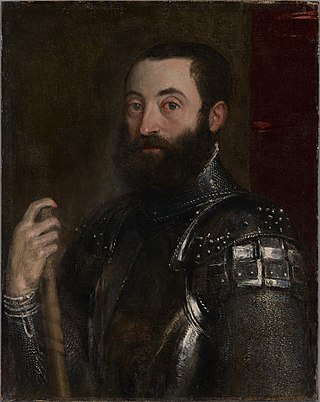
Guidobaldo II della Rovere was an Italian condottiero, who succeeded his father Francesco Maria I della Rovere as Duke of Urbino from 1538 until his death in 1574. He was a member of the House of La Rovere. Guidobaldo was an important patron of the arts in general, and of Titian in particular, commissioning his own portrait, and buying Titian's Venus of Urbino.

Francesco Maria II della Rovere was the last Duke of Urbino.

Livia della Rovere was an Italian noblewoman of the House of della Rovere and the last Duchess of Urbino (1599–1631).

The Villa Imperiale of Pesaro is a suburban palatial house outside of Pesaro, built and decorated by artists of the late-Renaissance or Mannerist period. It is now a private residence but the frescoed rooms and elaborate gardens are available for touring.
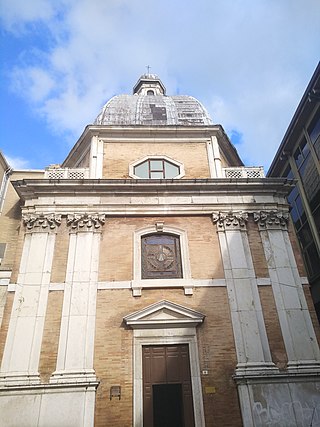
The Municipal Chapel of Sant'Ubaldo is a Baroque-style, small octagonal Roman Catholic church located on Largo Mamiani 1, in central Pesaro, region of Marche, Italy.
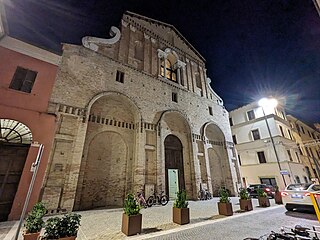
San Giovanni Battista is a church located on Via Passeri #98 in central Pesaro, region of Marche, Italy.

Vittoria Farnese, also known as Vittoria, Princess of Parma, and by her married name Vittoria Farnese della Rovere, was an Italian noblewoman, Duchess consort of Urbino from 1548 until 1574 by marriage to Guidobaldo II della Rovere, Duke of Urbino.